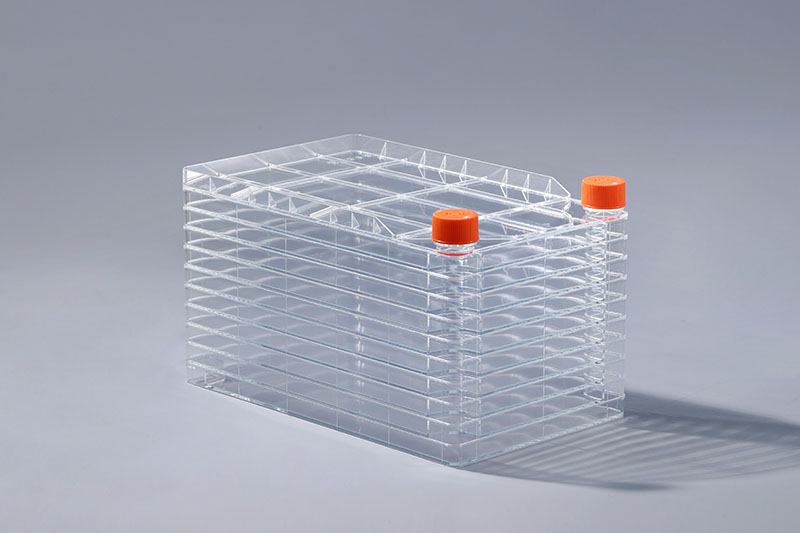A cell factory is a commonly used consumable in large-scale cell culture. Its structure consists of one or more layers, and the uppermost layer is provided with two perfusion ports. What process is used to produce such a complex structure?
The injection molding process adopted by the cell factory mainly includes the following steps:
①Pre-molding process:
The pre-molding process is that the plastic material is heated, transported, compacted, sheared, mixed and homogenized in the barrel to transform the material from a glass state to a viscous fluid state, so as to meet the injection molding requirements.
②Injection filling process:
In the injection filling stage, the screw injects the melt in the storage chamber into the cavity through the nozzle, the mold runner and the gate under the thrust of the injection cylinder.
③ Compression and compression process:
Continue injection molding to fill the volume vacated by the part due to shrinkage.
④Cooling and setting process:
After the holding pressure is over, the gate is frozen. The article undergoes a period of cooling and setting.
⑤ The process of ejecting and picking up:
After the product has been cooled for a period of time, it has a certain rigidity and strength. The part is ejected from the injection mold by the ejector pin of the mold.
The filling port and the main body of the top layer of the cell factory are integrally injection-molded. This process can ensure that the product has better sealing performance and good strength. The above is the production process of the cell factory. In addition, the injection molding process is also suitable for the processing of polyolefin, polyamide, polyoxymethylene, polycarbonate and other materials.
The FAI climbed 5.9 percent year-on-year in the first 11 months of 2018, quickening from the 5.7-percent growth in Jan-Oct, the National Bureau of Statistics (NBS) said Friday in an online statement.
The key indicator of investment, dubbed a major growth driver, hit the bottom in August and has since started to rebound steadily.
In the face of emerging economic challenges home and abroad, China has stepped up efforts to stabilize investment, in particular rolling out measures to motivate private investors and channel funds into infrastructure.
Friday's data showed private investment, accounting for more than 60 percent of the total FAI, expanded by a brisk 8.7 percent.
NBS spokesperson Mao Shengyong said funds into weak economic links registered rapid increases as investment in environmental protection and agriculture jumped 42 percent and 12.5 percent respectively, much faster than the average.
In breakdown, investment in high-tech and equipment manufacturing remained vigorous with 16.1-percent and 11.6-percent increases respectively in the first 11 months. Infrastructure investment gained 3.7 percent, staying flat. Investment in property development rose 9.7 percent, also unchanged.
 English
English



















































